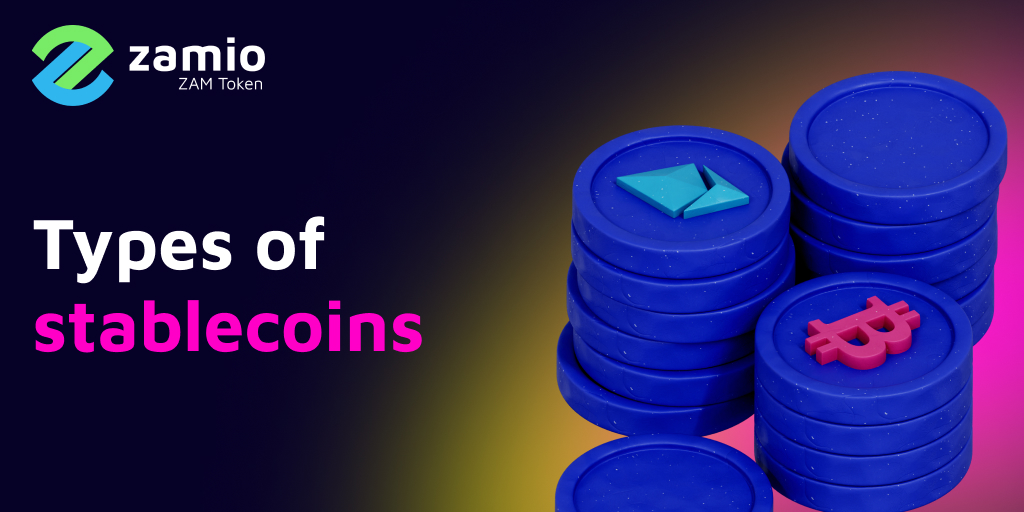Stablecoins are a type of cryptocurrency that provide more stability than other cryptocurrencies. Some are actually backed by the reserve of the asset they represent; others use algorithms or other methods to keep their values from fluctuating too much.
Such popular cryptocurrencies as Ethereum and Bitcoin are very subject to volatility, which does not allow them to be widely used as a full-fledged means of payment. One of the main reasons for the creation of stablecoins is precisely the idea of using them as a means of making daily household payments. An ideal stablecoin should perform three functions:
1. Act as a medium of exchange (allows you to buy and sell goods and services directly, without using barter).
2. Be a means of storing assets (allows you to save savings for a long time without losing their value).
3. Used as a unit of account (allows you to measure and compare the cost of goods and services).
Table of Contents
Types of stablecoins
Fiat-backed stablecoins are described as IOUs — you use your dollars or other fiat currency to buy stablecoins, which you can later exchange for your original currency. Unlike other cryptocurrencies that can fluctuate a lot in value, fiat-backed stablecoins tend to have very small price fluctuations. But that doesn’t mean that stablecoins are a completely safe — they’re still relatively new with a limited track record and unknown risks. These stablecoins include Tether, USD Coin, TrueUSD, PAX Circle, and others.
● Crypto-collateralized stablecoins are backed by other crypto assets. Because the reserve asset can be volatile, crypto-backed stablecoins are over-collateralized to provide the value of the stablecoin. For example, a $1 crypto-backed stablecoin can be pegged to a $2 underlying crypto asset, so if the underlying cryptocurrency loses value, the stablecoin has a built-in airbag and can stay at $1. These assets are less stable than fiat-backed stablecoins and it is a good idea to keep an eye on how the underlying crypto asset behind your stablecoin is performing. One of the crypto-backed stablecoins is DAI, which is pegged to the US dollar and runs on the Ethereum blockchain.
● Algorithmic stablecoins are not backed by any asset, making them perhaps the most difficult stablecoin to understand. These stablecoins use a computer algorithm to ensure that the value of the coin does not fluctuate too much. If the price of an algorithmic stablecoin is pegged at $1, but the stablecoin rises higher, the algorithm will automatically release more tokens into supply to lower the price. If it falls below $1, it will cut the supply to raise the price again. The number of tokens you own will change, but they will still reflect your stake. One of the algorithmic stablecoins is AMPL, which its creators say is better equipped to deal with demand shocks. Examples are, for example, DefiDollar and Ampleforth.
The pros and cons of stablecoins
Transactions in stablecoins are anonymous and secure, and are not subject to rate fluctuations — this is an advantage. The downside is that for the same reason, you won’t be able to make money on the course. In addition, for example, classic stablecoins (Tether, USD Coin, TrueUSD, PAX Circle) are backed by real financial assets, that is, they are not decentralized.









